
Business
20:51, 20-Jan-2018
Trump’s first year sees US economic boom
By CGTN's Yang Jing
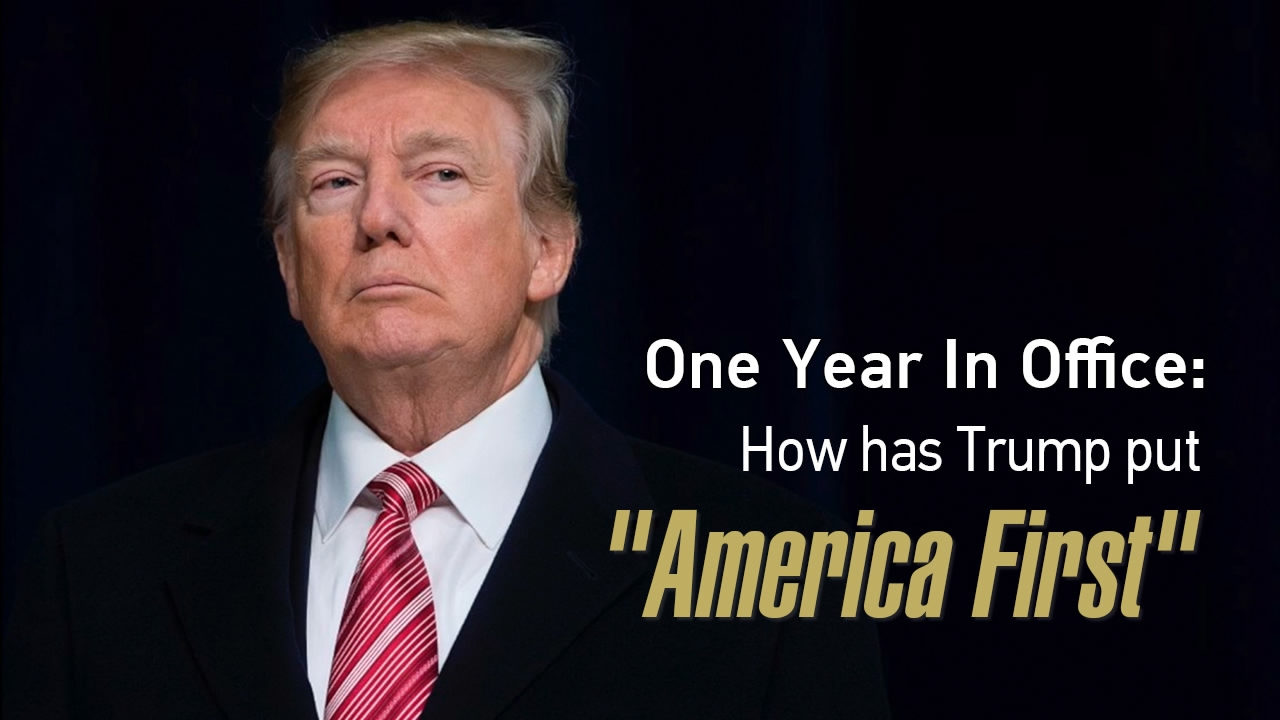
The US economy performed quite well in Donald Trump’s first year as president, although how much of the improvement can be attributed to President Trump remains unclear.
Apparently, Trump believes he should take credit for the economic recovery in 2017 and has been boasting about his achievements with a flood of tweets.

Economic
boom in 2017
The US economy has been in better shape by a number of key measures, including GDP growth, unemployment rate as well as stock market performance.
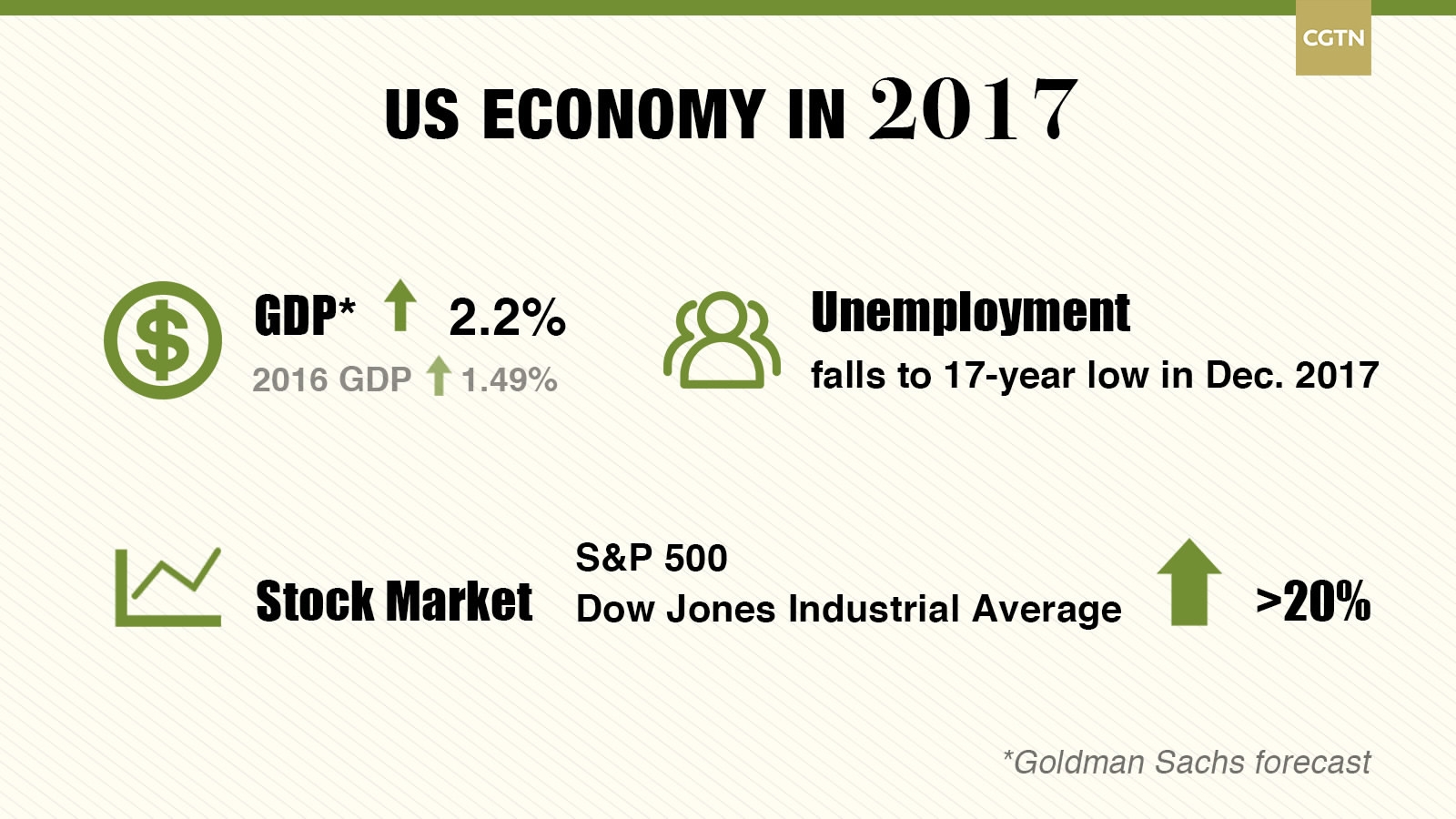
Although the official data has not been released yet, both Goldman Sachs and Bloomberg forecast that the world’s largest economy grew 2.2 percent in 2017, far from the 4 percent promised by Trump on the campaign trail, but still a big jump from 1.5 percent in 2016.
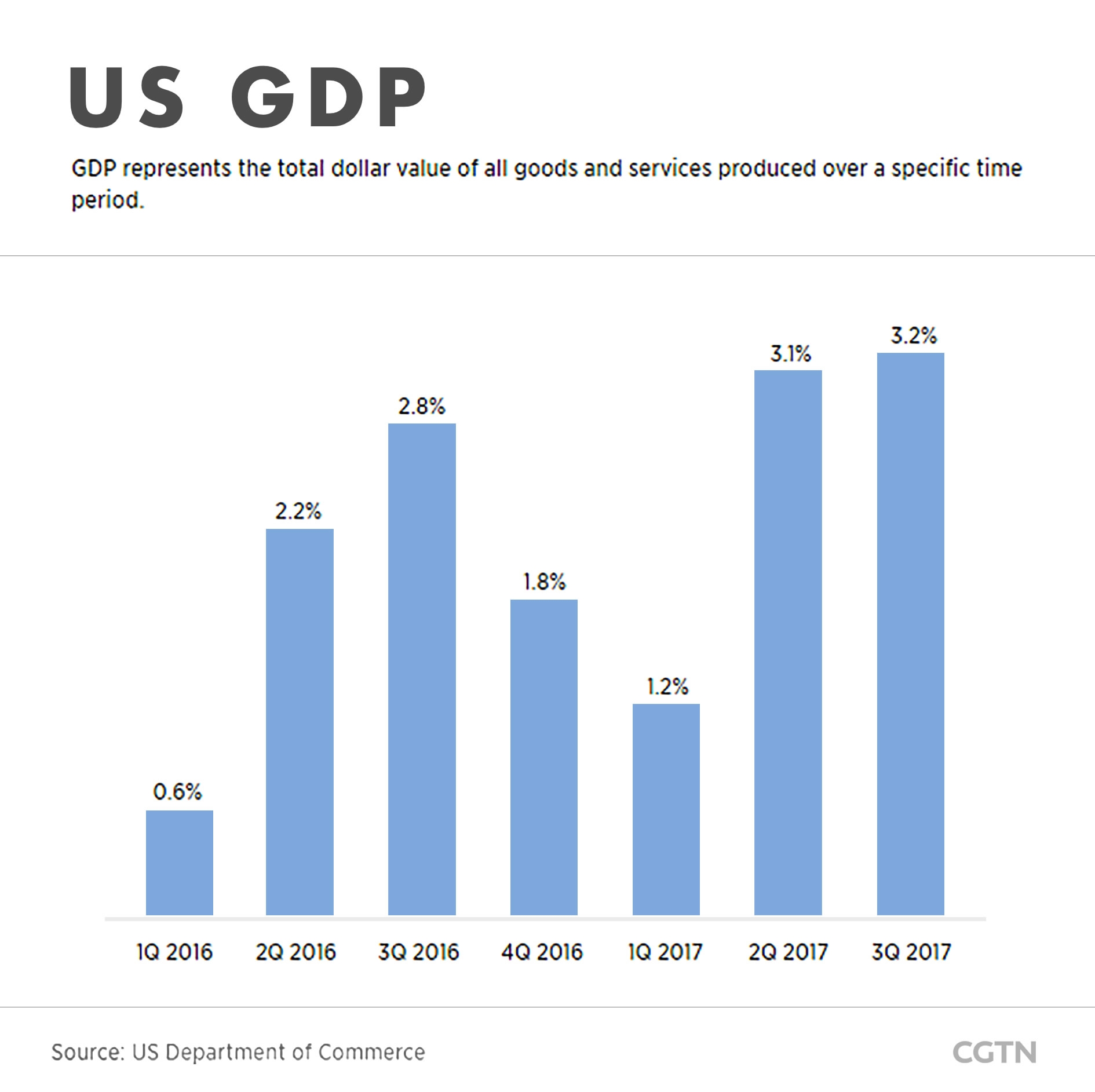
Trump also claimed to have boosted US employment by bringing offshored jobs back to American soil.
The unemployment rate fell to 4.1 percent in Q4 2017, its lowest reading since December 2000, official data showed.
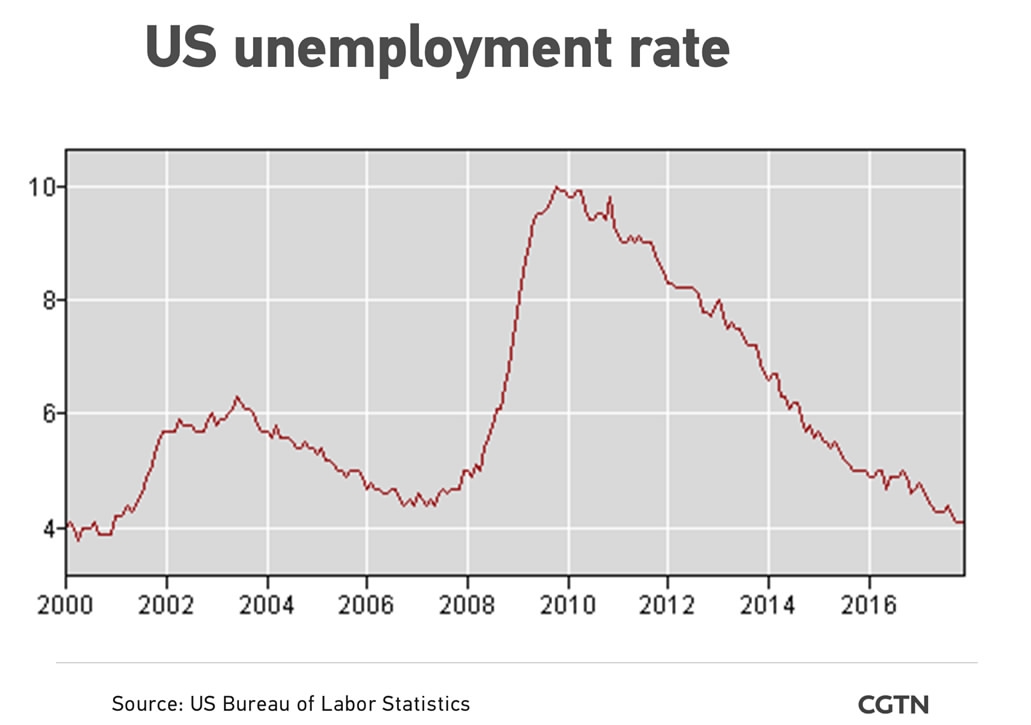
Moreover, as Trump has mentioned several times on Twitter, the US stock market surged in 2017.
Both the S&P 500 index of the leading 500 American companies and the Dow Jones Industrial Average index of 20 major companies saw more than 20 percent growth in the past 12 months.
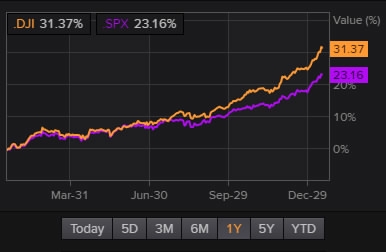
Source: Reuters
Source: Reuters
Economists say that Trump can take some credit for the stock market, but it’s far too soon for him to claim a success in job creation, Fortune reported.
Unlike the stock market, which tends to react quickly to expectations as much as reality, hiring decisions are made based on fundamental factors such as the health of the economy, so employers cannot be influenced directly by the president in a short time, the report said.
The US is not the only one to see economic growth and a stronger stock market in 2017.
For the first time since 2010, the world economy is outperforming most predictions, according to a Goldman Sachs’ research.
Putting 'America first'
Trump has surprised the world by meeting many promises he made during the presidential campaign, starting with scrapping trade deals.
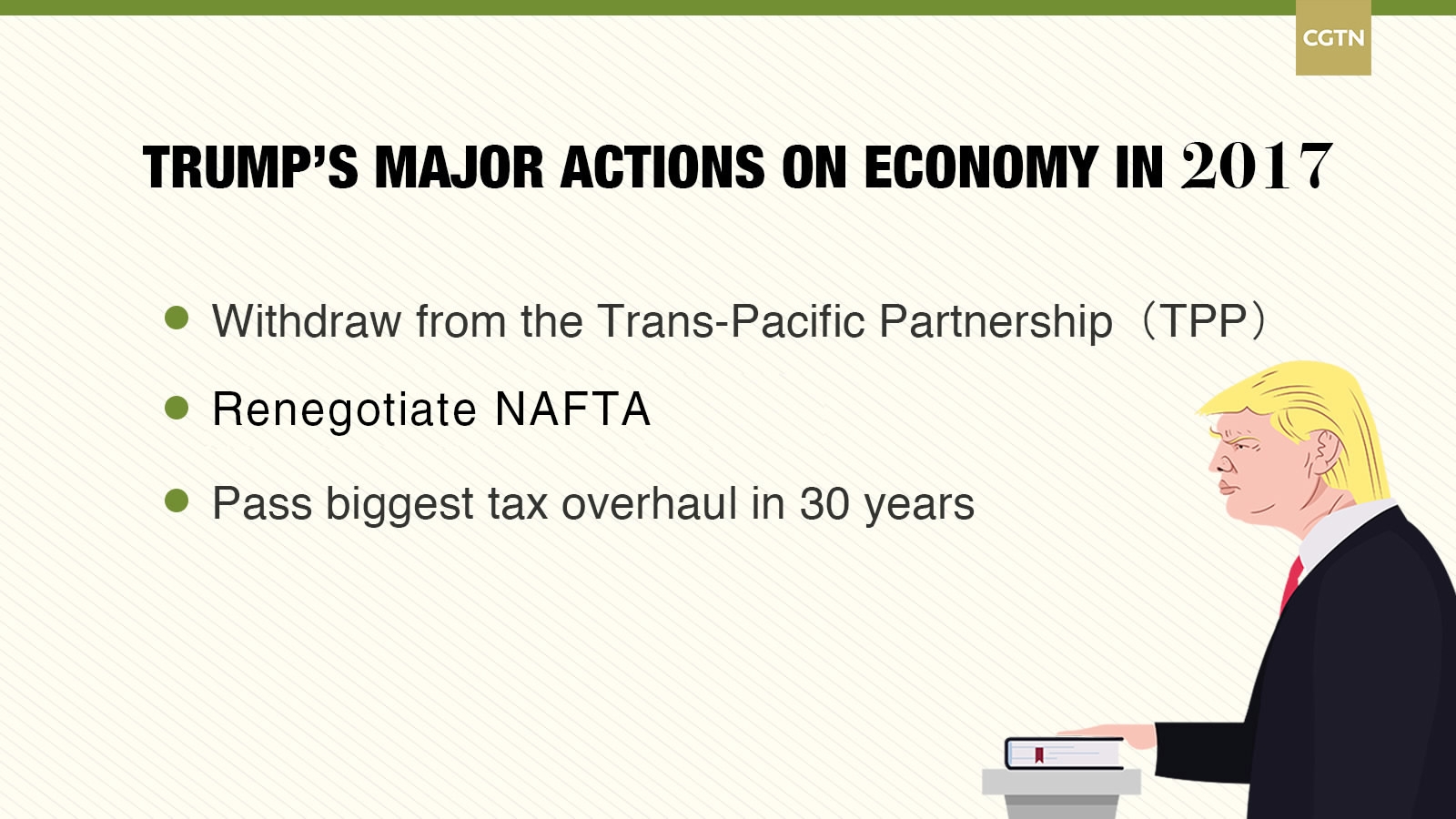
He refused to join in the Trans-Pacific Partnership (TPP) trade agreement, leaving several Asian countries disappointed after they had invested substantial political capital in the deal.
Later, he threatened to quit the North American Free Trade Agreement (NAFTA) and started renegotiation on the trade deal with no major progress made so far.
The biggest tax overhaul in the past 30 years has captured media headlines for months and Apple’s recent repatriation of massive overseas profits shows big tax payers’ support for the policy, despite growing fears of exploding deficits.
No matter how much the 2017 US economic boom should be attributed to President Trump, the world’s largest economy still has room to grow, according to the 2018 outlook from Morgan Stanley’s Chief US economist Ellen Zentner.
Zentner and her team have revised upward US GDP growth in 2018 to 2.5 percent from 2.2 percent, considering the tax reform effect and a strong synchronous global economy, according to a research report released in December.
But after all, “there is no such thing as a free lunch,” William C. Dudley, president and CEO of the Federal Reserve Bank of New York, said in a speech on January 11, noting while the recently passed Tax Cuts and Jobs Act of 2017 likely will provide additional support to growth over the near term, “it will come at a cost.”
He noted that the legislation will increase the nation’s longer-term fiscal burden, which is already facing other pressures, such as higher debt service costs and entitlement spending as the baby boomer generation retires.
(Liang Rui contributed to the story.)
(Video by Ge Ning)

SITEMAP
Copyright © 2018 CGTN. Beijing ICP prepared NO.16065310-3
Copyright © 2018 CGTN. Beijing ICP prepared NO.16065310-3